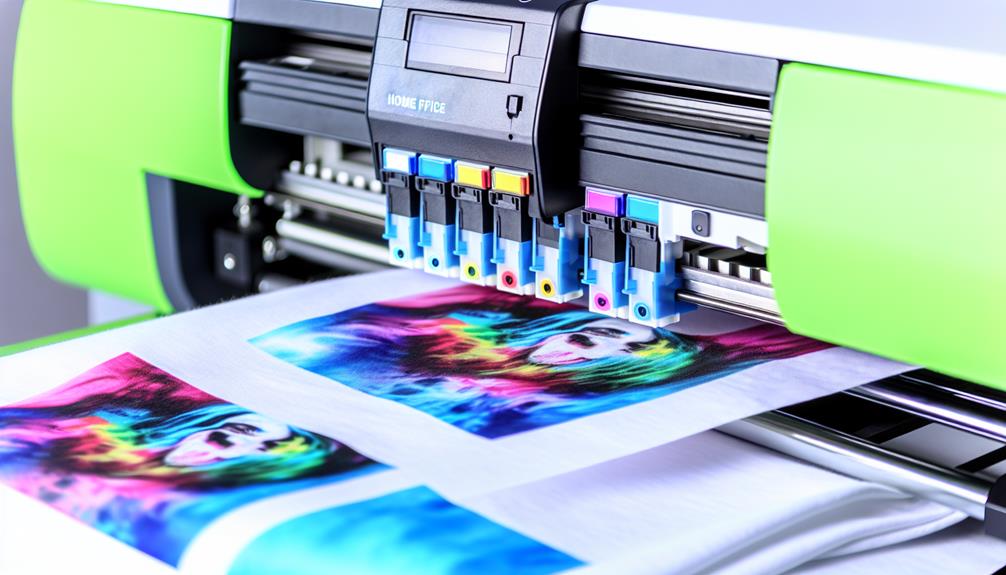
Comparing the Best Direct to Film Printers on the Market Today
Introduction: Unveiling the World of DTF Printing
In the ever-evolving landscape of garment printing, Direct to Film (DTF) printing stands out as a game changer. With its ability to produce vibrant prints on various fabrics, DTF technology has rapidly gained popularity among both hobbyists and professional businesses. But what makes DTF printing so appealing? And more importantly, how do you choose the best direct to film printer for your needs? This article will delve deeply into various aspects of DTF printers, comparing the best models on the market today.
What is Direct to Film Printing?
Direct to Film Printing refers to a process where images are printed onto a special film using specialized inks. These films are then transferred onto garments using heat and pressure. The results? Stunning, full-color graphics that boast excellent durability and washability.

Why Choose DTF Printing Over Other Methods?
When considering printing methods, you might ask yourself why you should opt for DTF over traditional methods like screen printing or heat transfer printing. The reasons include:
- Versatility: DTF can print on a wide range of materials including cotton, polyester, and blends.
- Cost-Effective: Especially for small runs or custom designs.
- High Detail: Incredible resolution and color vibrancy.
- Eco-Friendly Options: Many inks used in DTF are water-based and environmentally friendly.
Comparing the Best Direct to Film Printers on the Market Today
Navigating through the plethora of choices available can be challenging. In this section, we’ll directly compare some of the best direct to film printers currently available.
1. Epson SureColor F170
Overview
The Epson SureColor F170 is heralded as one of the best DTF transfer printing DTF printers due to its exceptional print quality and versatility.
Key Features
- High-resolution printing
- Compact design ideal for small spaces
- User-friendly interface
Pros
- Affordable pricing
- Excellent customer support from Epson
- Compatible with various materials
Cons
- Limited color gamut compared to higher-end models
2. Brother GTX Pro
Overview
The Brother GTX Pro stands out in commercial settings with its rapid print speeds and large format capabilities.
Key Features
- Six-color ink system for vibrant prints
- Automatic maintenance features
Pros
- Fast production times
- Great for bulk orders
Cons
- Higher initial investment required
3. Mimaki JFX200
Overview
For those seeking UV DTF transfers, the Mimaki JFX200 offers an innovative approach that combines speed with detail.

Key Features
- UV LED curing technology
- Large print area
Pros
- Exceptional durability; prints can withstand outdoor conditions
- Versatile media options
Cons
- More expensive than traditional options
Understanding DTF Transfers: The Heart of DTF Printing
What Are DTF Transfers?
DTF transfers are printed films that contain your design ready to be applied onto fabric through heat transfer methods. They are essential in achieving high-quality results in direct-to-film printing.

How Do You Create DTF Transfers?
Creating effective DTF transfers involves several steps:
Common Applications of DTF Transfers
DTF transfers can be utilized in various sectors:
FAQs about Direct to Film Printing
1. What is the difference between DTF and DTG printing?
Answer: While both methods involve direct printing onto textiles, DTG (Direct to Garment) uses inkjet technology specifically designed for fabrics, making it ideal for soft fabrics with intricate designs but limited in material types compared to DTF which allows for broader applications including hard surfaces.
2. Can I use any type of printer for creating DTF transfers?
Answer: No! You need a specific type of printer custom t-shirt transfers that's capable of handling specialty inks suited for creating durable transfers typically found in dedicated direct-to-film printers.
3. How long do prints last when using DTF transfers?
Answer: With proper care—like washing inside out and avoiding high temperatures—DTF prints can last up to 50 washes without significant fading.
4. Are there any specific materials needed apart from a printer?
Answer: Absolutely! You will also require special films, adhesive powders, and a heat press machine dedicated to applying your transfers.
5. Is there any training required before operating a direct-to-film printer?
Answer: Some manufacturers provide training resources and tutorials; however, most users find they can quickly learn by experimenting with their equipment.
6. What’s better: wholesale or custom DTF designs?
Answer: It depends on your business model! Wholesale is cost-effective if you have high volume sales whereas custom designs allow you flexibility catering specifically towards client needs.
Conclusion: Making Your Choice Easier
Choosing from among the best direct-to-film printers available today doesn’t need to be overwhelming when equipped with knowledge about each model's strengths and weaknesses alongside understanding how they fit within your budget or operational structure.
As we've discussed throughout this article on "Comparing the Best Direct To Film Printers On The Market custom apparel printing Today", it's paramount that you consider not only immediate costs but also long-term value offered by features such as ease-of-use reliability service support amongst others since these factors play an instrumental role in determining overall satisfaction levels over time!
Now that you're armed with all this information about choosing an ideal printer tailored just right towards fulfilling those wholesale DTF transfers ambitious creative visions; what will your next move be? Consider diving deeper into exploring specific models mentioned earlier while weighing each purchase option against buy DTF transfers existing needs! Happy printing!